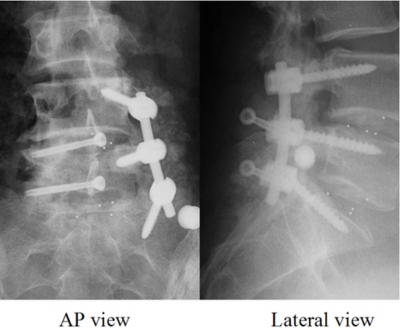Unilateral pedicle screw fixation
Three instrumentation systems were tested randomly: unilateral pedicle screw (UPS), UPS with contralateral translaminar facet screw (UPSFS), and bilateral pedicle screw (BPS).
The range of motion (ROM) and the neutral zone (NZ) of L3-5 were measured.
All fixation types could reduce the ROM of L3-5 significantly in flexion, extension, and lateral bending, compared with the intact state. In axial torsion, only BPS reduced the ROM significantly, compared with the intact state. The UPSFS technique provided intermediate stability, which was superior to the UPS in flexion-extension and lateral bending, and inferior to the BPS in lateral bending. Compared with the intact state, the NZs decreased significantly for UPS, UPSFS, and BPS in flexion-extension, while not significantly in lateral bending and axial torsion.
In this study, among the 3 fixation techniques, BPS offered the highest stability, UPSFS provided intermediate stability, and UPS was the least stable for 2-level lumbar spinal disorders. UPSFS appeared to be able to offer a less invasive choice than BPS in well-selected patients with 2-level lumbar spinal disorders 1).
